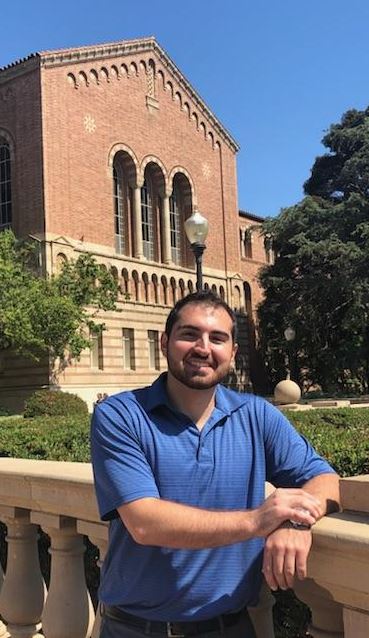Christopher Jelloian
University of California, Los Angeles
The central objective of this study is to develop a model of heat transfer to a hypersonic vehicle entering the Martian atmosphere. During the 1950s and 1960s, radiative heating was studied to ensure safe reentry into Earth’s atmosphere from the Moon. During the hypersonic stages of reentry, an ion layer forms around the capsule. In Earth’s atmosphere, this ion layer is made up of O2 and N2 plasma. As NASA’s attention is turned to the human exploration of Mars, the radiative heating process that occurs during entry descent and landing (EDL) is significantly different than Earth EDL as studied during the time of the Apollo Program. These differences arise primarily due to the differences between Earth and Mars’ atmospheric composition, which results in different ion layers that form around the entry vehicle.
The Laser Spectroscopy and Gas Dynamics Laboratory at UCLA houses a newly built shock tube. The shock tube will be filled with different gasses found on Mars (for example CO2, CO, Ar), and ultimately with a simulated Martian atmosphere (including trace amounts of other gasses in their respective ratios on Mars). The shock tube will generate a moving shock that travels down the tube through the test section and reflects off of the wall. This shock reflection generates high temperatures, and this is where the heat transfer properties of the gas mixture can be observed. The region of high temperature gas will be probed using laser spectroscopy and the data collected will be used to create a thermodynamic non-equilibrium kinetic model that will capture the rates of energy transfer.
A NASA shock tube study in 1996 conducted by Whiting et al. predicts carbon monoxide to be contributing around 65% of the total heat transferred to an entry vehicle during a Mars descent. They used laser emission spectroscopy, and we propose using laser absorption spectroscopy. Absorption spectroscopy done in the mid-infrared wavelengths will allow us to probe the evolution of rotational and vibrational state populations (or rotational and vibrational temperatures) of these CO and CO2 molecules behind reflected shock waves in a simulated Martian atmosphere. Once the rates of energy transfer between translation, rotation, and vibration are known for different molecules in this environment, a model will be built.
This experiment will increase the fundamental understanding of radiative heat transfer to probes in different chemically active flow fields. An increase in the fundamental understanding of radiative heat transfer is vital to NASA as they send landers and eventually humans to planets and moons with different atmospheric composition. This research would directly aid both the large and small payloads bound for Mars in the future by increasing our understanding of the heat transferred to the entry vehicle during descent through the atmosphere. By increasing our knowledge of atmospheric entry and descent, NASA will be able to create more efficient thermal protection systems (TPS) for entry vehicles, reducing the mass of the TPS. This will allow more payload mass to be delivered to the surface of Mars. Understanding the fundamental physics of this problem will also allow for safer payload descent and less environmental contamination as many groups from across the globe aspire to land drones and rovers on Mars.
























